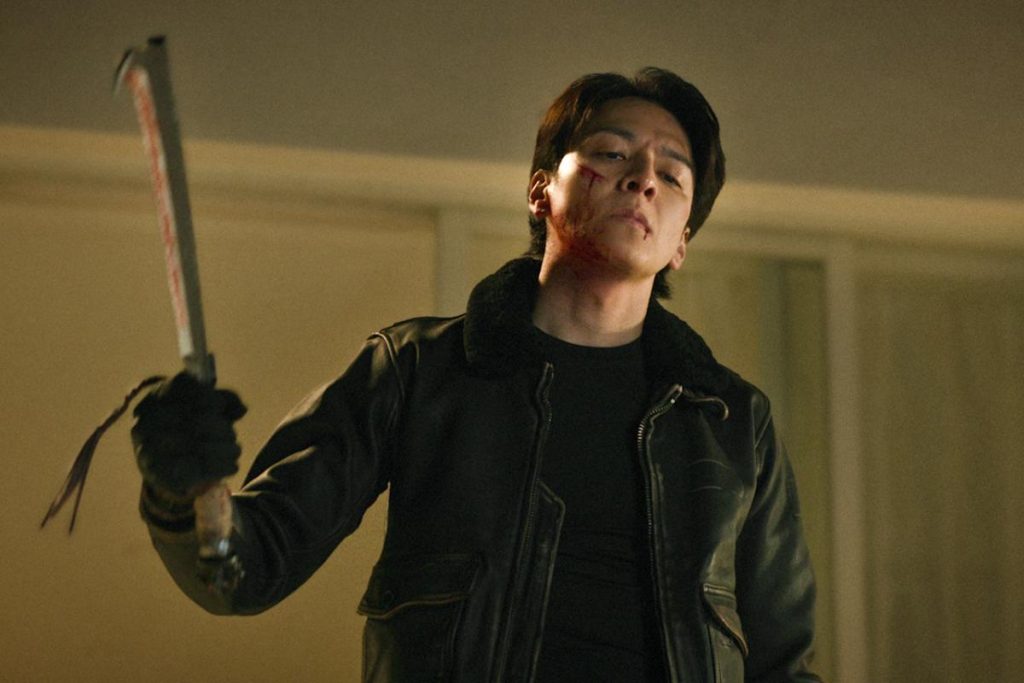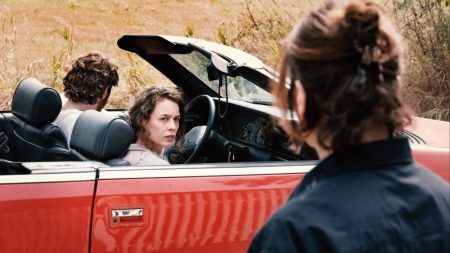Introduction to "Demon City"
"Demon City," now available on Netflix, is a gripping revenge thriller that delves into the dark underbelly of a criminal underworld. Directed by Seiji Tanaka and adapted from the manga "Oni Goroshi" by Masamichi Kawabe, the film presents a stark narrative of vengeance and the blurred lines between humanity and demonization. The story centers around Sakata, portrayed by Toma Ikuta, a hitman grappling with the delicate balance between his violent profession and his cherished family life. This equilibrium is savagely disrupted by a gang donning traditional Japanese demon masks, setting off a chain of events that unfolds over a decade.
Plot Summary: A Journey of Vengeance
The film opens with Sakata, a hardened hitman, whose life is turned upside down when a brutal gang attack shatters his peaceful existence. This incidence leaves him physically incapacitated and emotionally shattered, forcing him into a wheelchair. Twelve years later, Sakata reemerges, albeit in a diminished physical state, yet determined to exact revenge. His resurgence coincides with the rise of a new crimelord and the Kimen-gumi gang, who have overtaken Shinjo City, prompting Sakata to shed his passive demeanor and return to his deadly roots. The story is a relentless pursuit of vengeance, punctuated by graphic violence and intense action sequences that define Sakata’s quest for retribution.
Sakata’s Character: A Study in Silence and Strength
Toma Ikuta’s portrayal of Sakata is nothing short of compelling, achieved with minimal dialogue yet immense emotional depth. Sakata’s character is built on silence, with Ikuta conveying profound motivation and internal turmoil through his actions and presence. Despite his physical limitations, Sakata’s determination and resilience make him a formidable figure, capable of unleashing ruthless vengeance. This dichotomy of a man torn between his past and present, family and violence, adds layers to his character, making him both relatable and fearsome.
Themes and Style: A Visual and Thematic Exploration
The film’s direction and visual style are noteworthy, with elaborate fight choreography and a penchant for graphic violence. Director Seiji Tanaka’s use of continuous shots in action sequences adds to the film’s intensity, creating a visceral viewing experience. The themes of revenge and the transformation into a "demon" are central, exploring the moral ambiguity of Sakata’s actions. The use of oni masks by the antagonists symbolizes their depravity and the supernatural elements of their crimes, enhancing the eerie atmosphere.
Comparisons and Genre Resonance
"Demon City" draws comparisons to films like "Drive" and John Woo’s "Silent Night," which share themes of silent protagonists and meticulous revenge plots. The film’s action sequences and stoic hero remind viewers of genre classics, while its graphic content and dark narrative set it apart. The emphasis on action over dialogue is reminiscent of Indonesian filmmaker Timo Tjahjanto’s "The Shadow Strays," suggesting a broader appeal within the revenge thriller genre.
Recommendation: A Cautionary Note
While "Demon City" is a compelling watch for fans of revenge thrillers, it is not for the faint-hearted due to its relentless violence. The film’s strength lies in its unflinching portrayal of vengeance and the moral questions it raises. Toma Ikuta’s performance and the film’s stylistic execution make it a standout in its genre. Therefore, it is recommended for those who appreciate graphic action and a focused narrative, but viewers sensitive to violence may find it challenging.
In conclusion, "Demon City" is a visceral exploration of revenge, loss, and redemption, set against the backdrop of a crime-ridden city. With its intense action sequences and a powerful central performance, it offers a raw yet engaging cinematic experience for fans of the genre.









